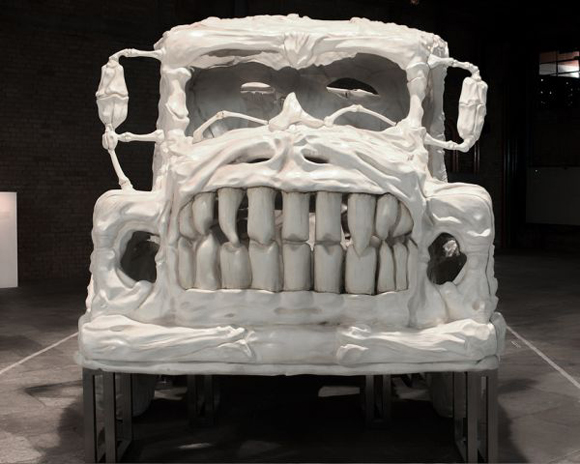I spent the past week in Prague where I was working on the World Forum on Governance. Away from my books and art materials, I resigned myself to skipping this week's post.
However, the cultural attache at the embassy shared with me the happy news that Alphonse Mucha's masterpiece,
the Slav Epic, will go on display in Prague next year, just 84 years after Mucha donated it to the city.
For those who only know Mucha for his
art nouveau posters, the Slav Epic was Mucha's most important and meaningful work: 20 huge patriotic murals of key moments from the history of the Slavic people.
 |
| Mucha posing in front of two of his murals |
In times of trouble and uncertainty, Mucha "wanted to talk in my own way to the soul of the nation," reminding them of their proud heritage and the heroism and sacrifice of their ancestors.
 |
| The origin of the Slavic homeland around 200 - 300 AD: peaceful Slav farmers flee invading Goths (seen galloping away from the burning village with their loot). As the young Adam and Eve of the Slavs escape, a holy man with outstretched arms implores the gods for mercy. |
 |
| Mucha's reference photo for the holy man |
 |
| "The Celebration of Svantovit: When Gods Are At War, Salvation Is In The Arts." The earliest Slavic center of civilization from 700-900 AD was centered around the shrine of Svantovit (later destroyed by Danish warriors in the 12th century) |
 |
| The Introduction of the Slavonic Liturgy: Praise The Lord in Your Native Tongue |
 |
| "After the Battle of Grunwald: The Solidarity of the Northern Slavs." Here we see the first great defeat of the previously invincible Teutonic Knights, demonstrating the rising power of the Slavic empire. |
 |
| "After the Battle of Vitkov: God Represents Truth, Not Power" |
 |
| "Peter Chelcicky at Vodnany: Do Not Repay Evil With Evil." A famous Slavic pacifist implores the victims of a Hussite raid not to become too caught up in revenge. |
 |
| "The Defense of Sziget by Nikola Zrinski: The Shield of Christendom" |
Mucha presented his murals to the city of Prague in 1928, but some criticized them as old fashioned and nationalistic. By 1933 the canvases were rolled up and placed in storage, and Mucha's hopes for his native land seemed farther and farther away. In 1939 the Nazis invaded Czechoslovakia and the gestapo arrested the aging artist. He died shortly after his release. The Slav Epic murals were stored away in a basement that flooded, damaging the paintings. After many years, the canvases were retrieved and restored, and were put on display in 1968 in southern Moravia. In 2012, these lovely works will return to Prague where they will be displayed with the honor and dignity they deserve.
 |
| "The Abolition of Serfdom in Russia: Work in Freedom is the Foundation of a State" |
I think Mucha's accomplishment was an act of courage comparable to the accomplishments he was celebrating. He put aside his commercially successful decorative art to make a lasting statement about the spirit of his country. He originally planned to make each painting approximately 20' x 26' but war, political repression and economic hardship repeatedly forced him to change his plans. After his first few paintings, the Belgian factory which manufactured the oversized linen was occupied by the German army and converted to military use. Mucha switched to painting on sailcloth from Scotland, and later was forced to reduce the size of the last murals. Still, he persisted. The Czech avant garde artistic community ridiculed his work as a "monstrosity of spurious artistic and allegorical pathos which, if exhibited permanently could harm the taste of the public." His murals were nearly confiscated during World War I for their "Czech patriotic content" and he made plans to bury them in the woods to protect them. The work was frowned upon by Nazis in World War II and by communist occupiers in the postwar era.
Time and again, Mucha was presented with obstacles but he persisted and left behind an important work of art.
 |
| "Jan Amos Komensky: A Flicker of Hope." A religious exile dies in his chair by the sea, looking out at eternity and thinking about returning to his beloved homeland. |


 All three paintings are oil on canvas, 24" x 30"
All three paintings are oil on canvas, 24" x 30"
































